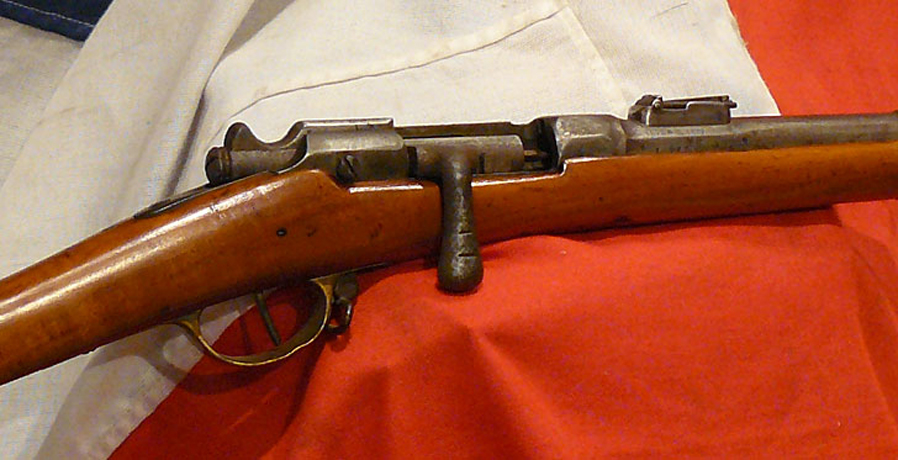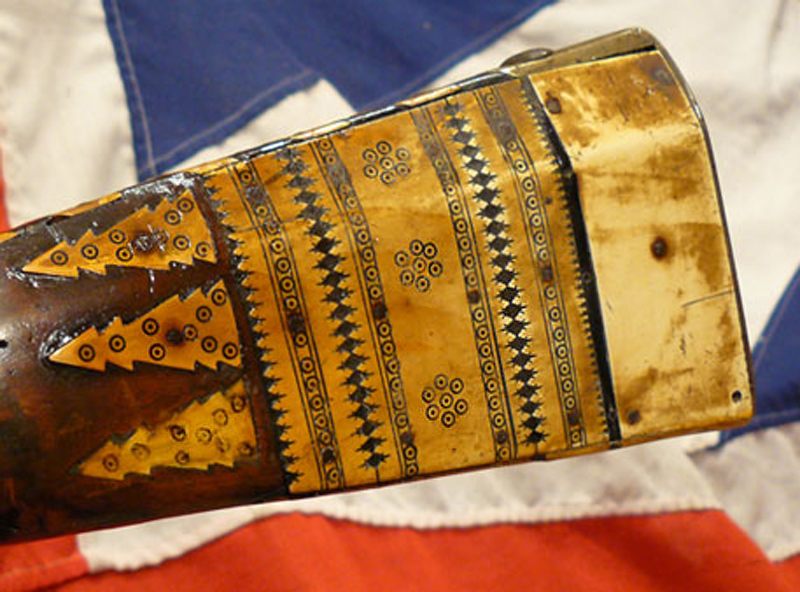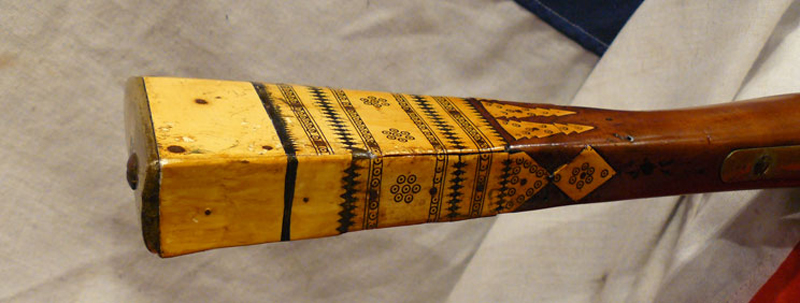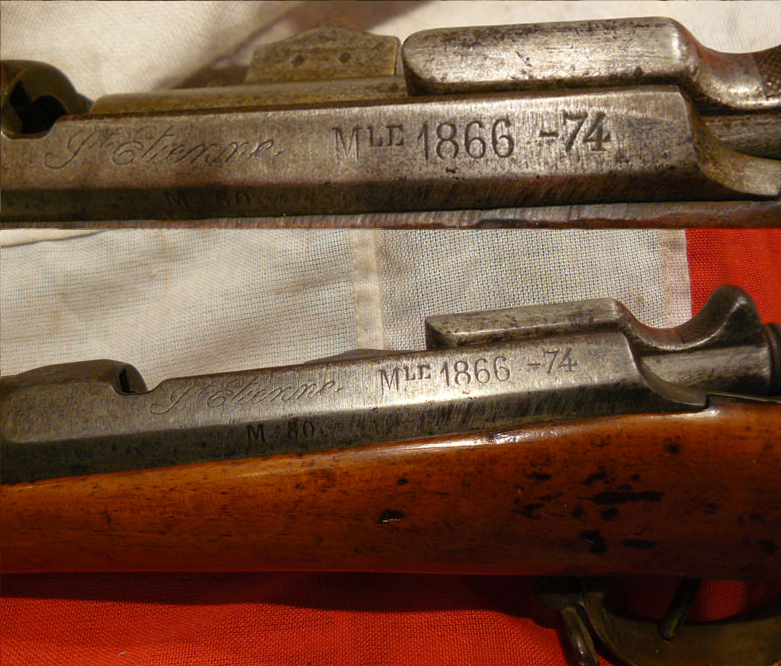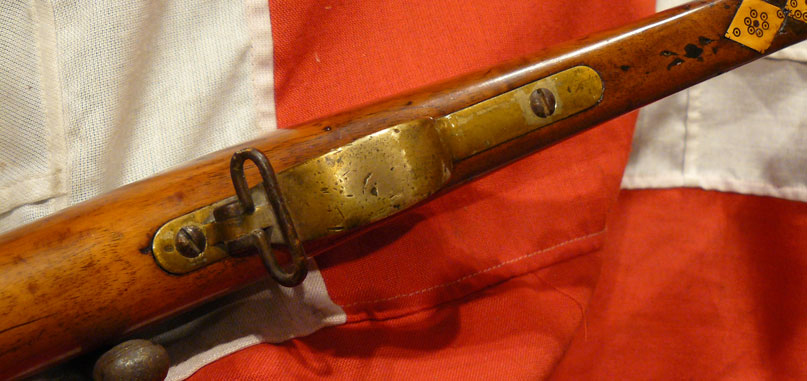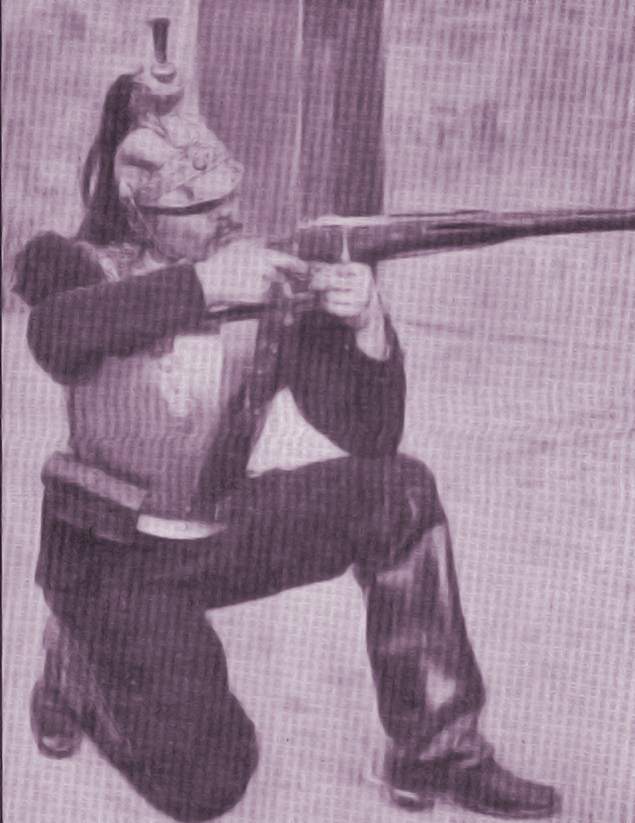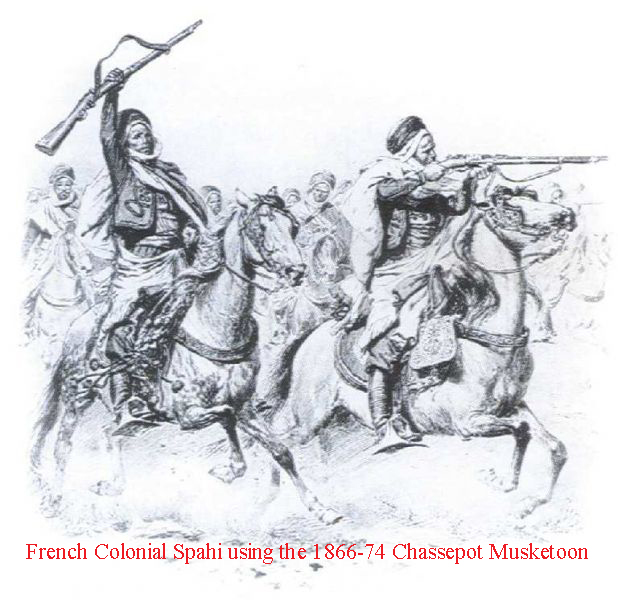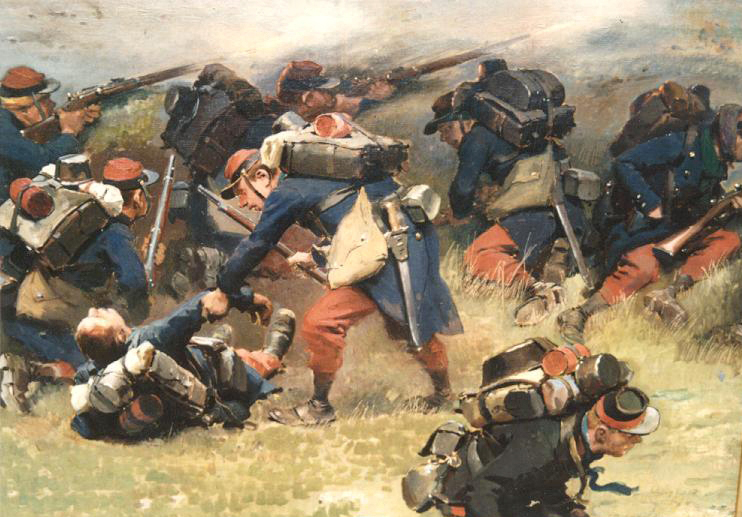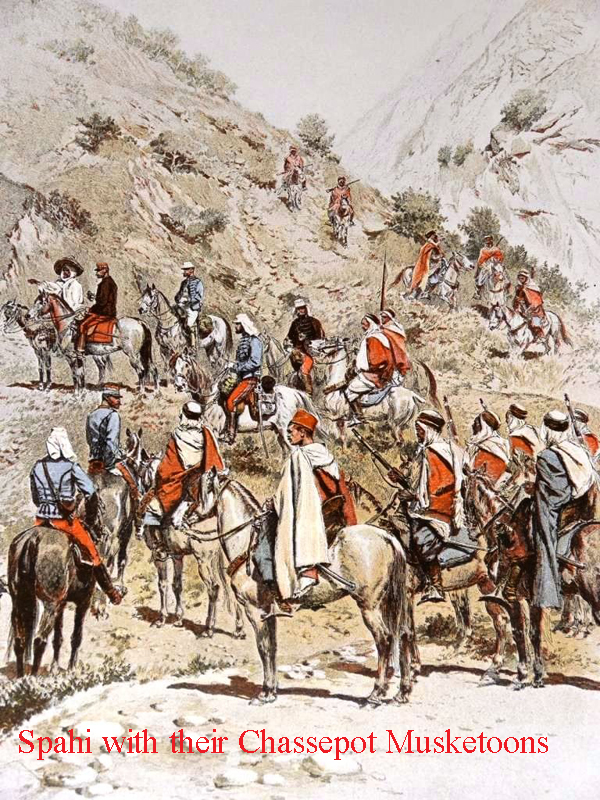A Very Scarce French Chassepot Rifle Musketoon Modele 1866 Colonial Inlay
Last used by the French Colonial Spahi in WW1. The scarce French Army Musketoon model, St Etienne. Converted to the Gras system in 1874. Used from the Franco Prussian war right throught WW1 by the French Colonial Spahi. This rifle was laterly renamed the 1866-74 after it was converted to the Gras system. Then in the latter part of its working life this rifle has been transferred to the French colonial troops, the famous Spahi, and over decoratedby them with typical Spahi flamboyant inlays at the butt. We show photos of a French Curassier using his 1866 Chassepot musketoon in the Franco Prussian War, French Infantry using their Chassepot, and the French Colonial Spahi using the 1866-74 musketoon into WW1.
Spahis were light cavalry regiments of the French army recruited primarily from the indigenous populations of Algeria, Tunisia and Morocco. The modern French Army retains one regiment of Spahis as an armoured unit, with personnel now recruited in mainland France. Senegal also maintains a mounted unit with spahi origins as a presidential escort: the Red Guard.he spahi regiments saw extensive service in the French conquest of Algeria, in the Franco-Prussian War, in Tonkin towards the end of the Sino-French War (1885), in the occupation of Morocco and Syria, and in both World Wars. A detachment of Spahis served as the personal escort of Marshal Jacques Leroy de Saint Arnaud in the Crimean War and were photographed there by Roger Fenton. A contingent of Spahis also participated in the North China campaign of 1860. During the Franco-Prussian War of 1870-71 one detached squadrons of Spahis formed part of the forces defending Paris, while a provisional regiment comprising three squadrons was attached to the Army of the Loire.2 A serious rising against French rule in Algeria during 1871?72 was sparked off by the mutiny of a squadron of Spahis who had been ordered to France to reinforce those units already there. Pahis were sent to France at the outbreak of war in August 1914. They saw service during the opening period of mobile warfare but inevitably their role diminished with the advent of trench warfare. During World War I the number of units increased with the creation of Moroccan Spahi regiments and the expansion of the Algerian arm. By 1918 there were seven Spahi regiments then in existence, all having seen service on the Western Front, in addition a detached squadron had served in Palestine against the Ottoman Empire. 11mm calibre, .20+ inch barrel. Obsolete antique no licence required. Its inventor was, Antoine Alphonse Chassepot, and it became the French service weapon in 1866. It was first used at the battlefield at Mentana, November 1867, where it inflicted severe losses on Garibaldi's troops. The event was reported at the French Parliament: "Les Chassepots ont fait merveille!", {The Chassepots did marvelous execution !} In the Franco-Prussian War (1870-1871) it proved greatly superior to the German Dreyse needle gun, outranging it by 2 to 1. Although it was a smaller caliber but the chassepot ammunition had more gunpowder and thus faster muzzle velocity. The Chassepots were responsible for most of the Prussian and other German casualties during the conflict. Small Gras cartridge adaption bolt head lacking. As with all our antique guns no license is required as they are all unrestricted antique collectables
Code: 21713
645.00 GBP


